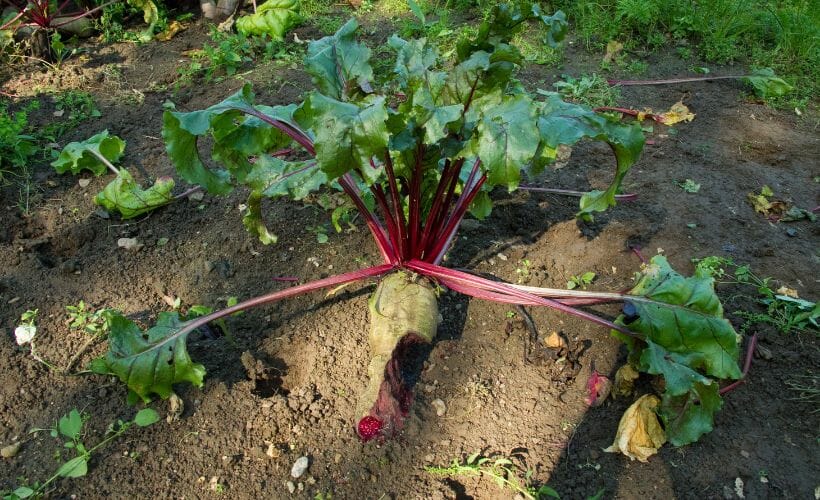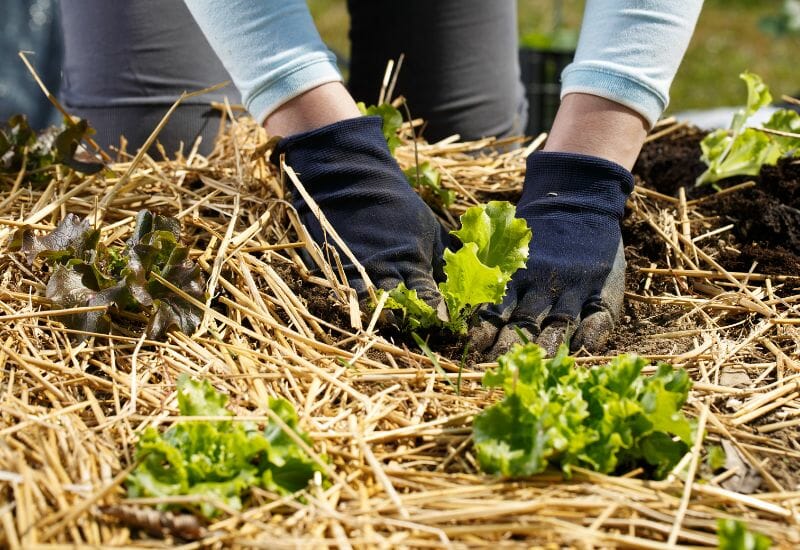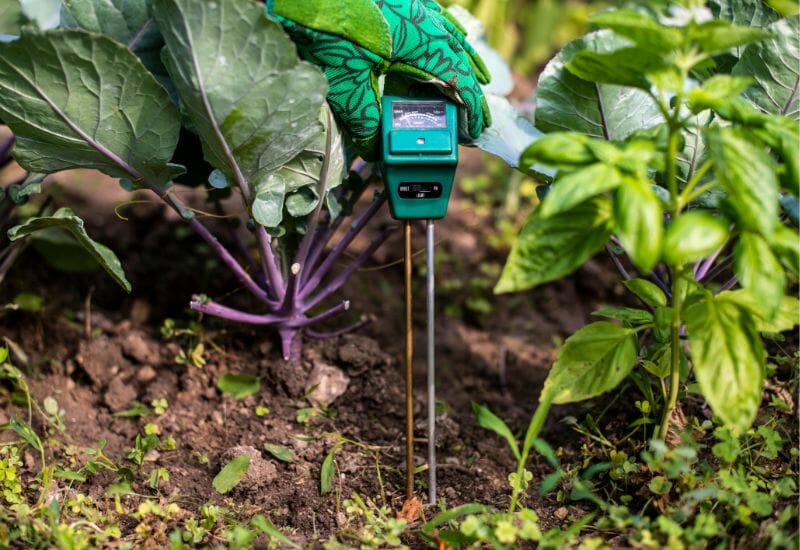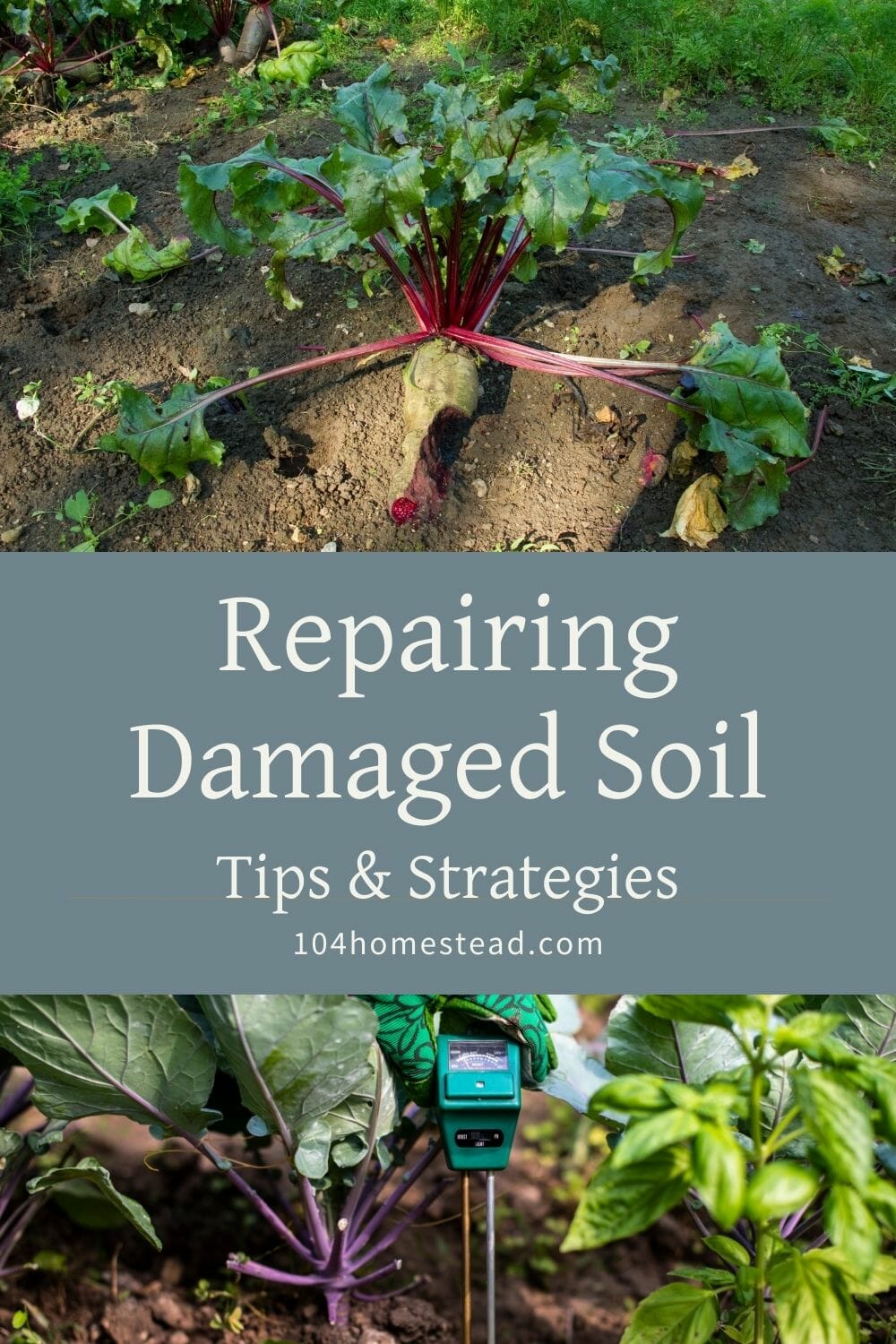Repairing Damaged Soil: Tips & Strategies for a Lush Garden
Bring life back to damaged soil with sustainable and cost-effective tactics. Repairing damaged soil will get you results in no time.

When the summer heat hits hard and your soil starts to bake and dry out, it can feel like you are at a loss for how to take care of it. The plants might struggle to put down roots, and it can almost feel like you’re trying to grow food in an oven. If your soil is made of hard clods or is sandy dust that easily blows away, that only makes it more difficult to cultivate.
You aren’t the only one in this position. Poor agricultural and construction practices like using herbicides, pesticides, and other contaminants have damaged millions of acres of North American soil.
The good news is that this damage is reversible. Soil fertility is the foundation of strong plant and crop growth, and repairing it is possible and cost-effective. The process of bioremediation starts with an understanding of what makes soil healthy. The perfect recipe for healthy soil is composed of an ideal balance of organic matter, minerals, oxygen, water retention, and other life-sustaining elements.
The thing to remember is that your soil is not beyond repair. With the right plan, you can transform it from a hard, cracked desert to a lush, fruitful landscape. The steps may not be simple, but it’s worth the effort. After all, healthy soil is the foundation of a sustainable and successful garden.
Transition From Dirt to Soil with Compost
The first step in repairing damaged soil is to begin adding nutrients and structure back to the ground. This will take you from “dirt” to real “soil”. Organic compost and aged manure are the best and easiest soil amendments to improve soil health.
You can mix up an awesome batch of compost in a month or so, or you can buy it pre-made. Aged manure is easily found at the nearest horse, cow, or rabbit farm near you. Most farms (especially the horse-boarding type) are super happy to have you take the manure off their hands!
Of course, if you have your own animals, you can make use of their manure instead of sourcing it elsewhere. When you add compost or manure, you must add a lot of it to make up for the damaged soil. So get as much as you can possibly get your hands on!
Using a Lasagna Method to Amend the Soil
The best way to add your compost and manure is to apply a “lasagna” style of layering. This is sometimes better for the soil than double digging in the amendments and it helps reduce soil compaction.
Start with a layer of newspaper or cardboard, wet it down, and add a thin layer of compost or manure. Then, add a 6–8-inch thick layer of straw or chopped dry leaves, and top with a final thick layer of compost or manure. Making sure that erosion doesn’t wash away all the lovely nutrients you added is the next step in repairing damaged soil.
Keep Soil in Good Condition with Mulch
In nature, bare soil is never allowed to exist for very long. If a patch of earth becomes scratched up by an animal or washed bare by a flash flood, weeds quickly grow up and take over the bare soil. We can emulate this principle in our gardens by heavily mulching any bare soil in between our plants. By mulch, I don’t necessarily mean wood chip mulch, although it can be used in a Back to Eden garden.
The Best Kinds of Garden Mulch
- Straw
- Chopped leaves
- Seaweed
- Lawn Clippings
- Wood Chips
They all work beautifully. I suggest using the one that is most easily accessible in your area of the world. Leaf mold is a great way to mulch your garden during the growing season and after. Leaf mold made from the leaves that already need to be cleaned up in your yard is an easy, green, and free option.
After you have planted your plants or your seeds have sprouted to a decent size, cover any bare ground in between the plants with your mulching material. This will keep weeds from growing as aggressively, help retain moisture, and help prevent your good soil from washing away.

During the “off-season” of gardening, make sure your soil is heavily mulched, or grow a “cover crop” to act as a fertilizer as well as hold your soil in place. To do this, simply sow your cover crop of choice, let it grow all winter, and then turn it under with a hoe in the early spring.
Popular Cover Crop Varieties
- Winter Rye
- Hairy Vetch
- Clover
- Cow Peas
- Buckwheat
Selecting the right cover crop for your soil can make a huge difference in the success and growth of your garden.
When selecting a cover crop, it’s essential to understand the different qualities of varieties that you might choose and to think about how they will interact with the specific temperature and climate requirements of your garden. Every cover crop variety has different properties that make them beneficial, such as providing extra nutrition to the soil or suppressing weed growth. They also have varying temperature and climate requirements that can have a significant impact on the success of your garden.
Winter wheat is an ideal cover crop for moderate climates, as it can survive temperatures as low as 15 degrees Fahrenheit. The soil-enriching qualities of cool-weather clovers can only handle temperatures as high as 50 degrees Fahrenheit, so they must be planted in the early spring for the best results.
It’s wise to do some research to determine which cover crop best suits the needs of your soil. Consider the climate and temperature of your area, and ask around for what types of cover crops work best for similar gardens in the region.
Fix the Soil’s PH
At first glance, soil pH may not seem like a very important aspect of gardening. It’s actually a critical factor for ensuring success.

But what exactly is soil pH? It’s a measure of acidity or alkalinity, and it helps determine which nutrients, minerals, and microorganisms are available to your plants. With a simple soil test, you can quickly determine whether your soil is acidic, neutral, or alkaline. There are a few key indicators that can help you determine if your soil is on the acidic side. For instance, gardeners may notice that certain plants, such as azaleas, blueberries, and rhododendrons, exhibit growth problems within a few weeks of planting in soil with a pH below 6. If you’re using chopped leaves in your garden, then those acidic characteristics will be naturally present in the soil.
The good news is that if your soil’s pH level indicates that it’s a bit on the acidic side, you can easily and inexpensively remedy the problem with the application of organic garden lime. This natural soil amendment helps to lower soil acidity and raise pH levels. Lime is a valuable tool for maintaining a balanced soil environment and encouraging strong, disease-resistant plants.
Test Your Soil’s Key Indicators
Though testing soil pH may seem daunting, it’s an important and painless step that every gardener should take in order to ensure a successful and bountiful garden. With the help of a simple soil test and a few key indicators, you can quickly determine whether your soil is acidic, alkaline, or neutral. With a simple application of organic garden lime, balance it out and see your garden grow.
Frequently Asked Questions
I hope you found these tips on repairing damaged soil helpful for your gardening endeavors. Remember, it’s all about nurturing our earth back to health one step at a time. If you’re looking to kickstart your garden journey or learn more about organic soil care, be sure to check out my posts on How to Start a Garden in Your Yard, No Matter the Space or Soil and Organic Amendments for Healthy Soil.
If you’ve found value in this blog post and enjoyed reading it, why not share it with your Pinterest community? Pin the image below and spread the love!

After applying these simple techniques, you will find your soil much more fruitful and easy to work on. As you continue to apply these principles each season, the soil will keep increasing in nutrients. Eventually, you will have completely repaired your damaged soil!
Have you faced challenges with soil health in your garden? Share your experiences and any unique tips you’ve discovered for rejuvenating your garden’s soil.

